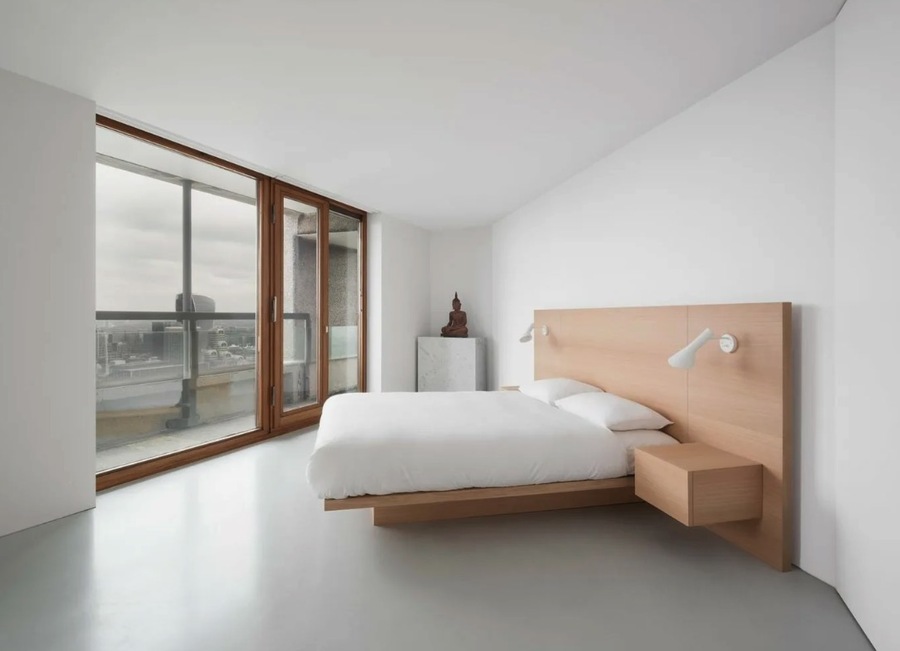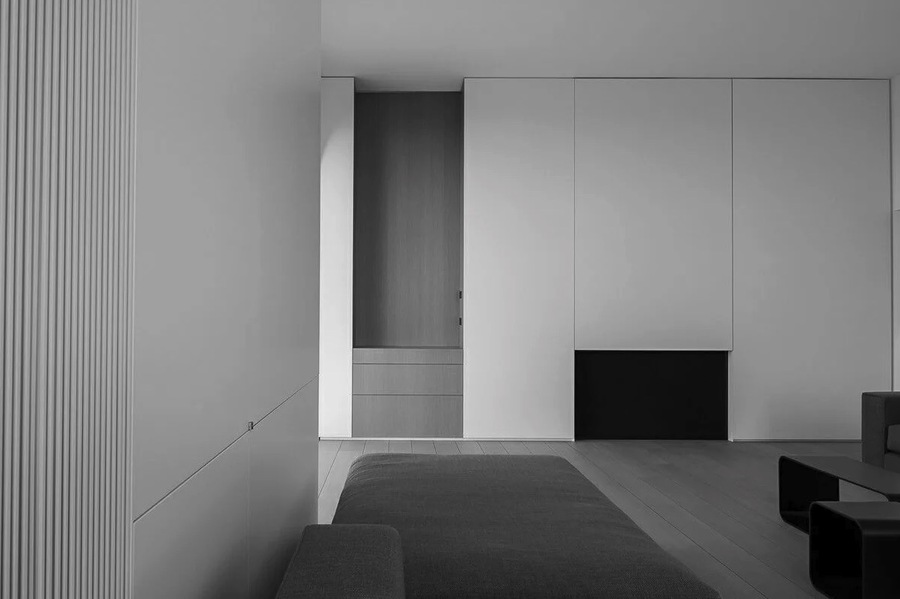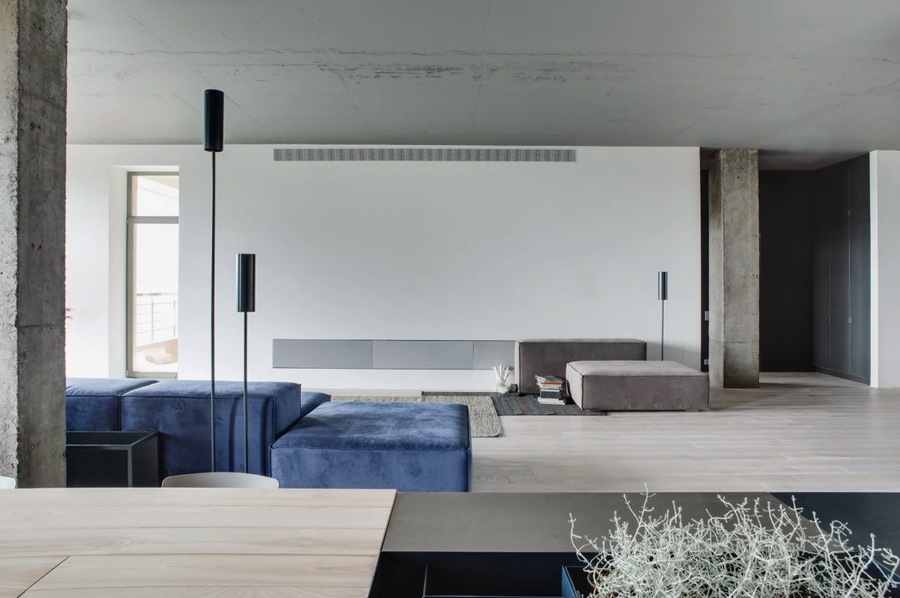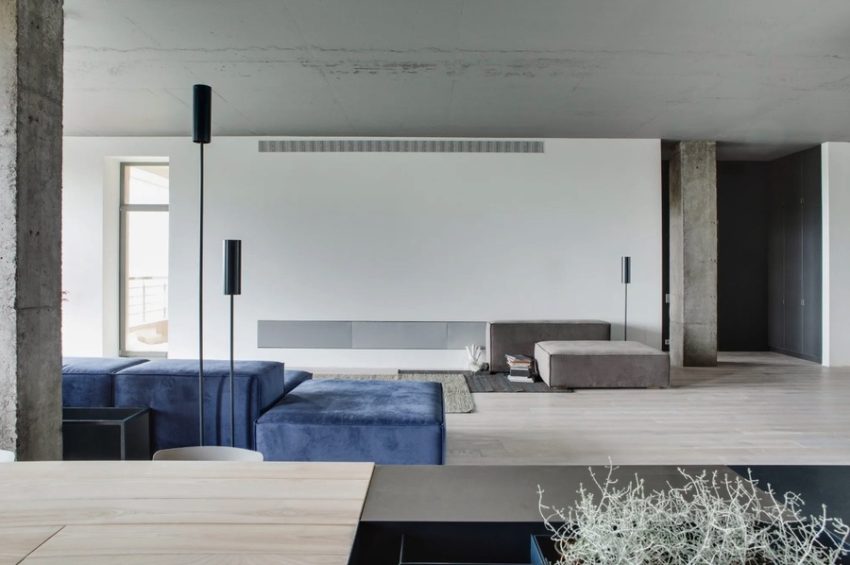Minimalism is a style of interior design that harmoniously combines functionality with aesthetic simplicity. It focuses on the clear organization of space, the use of a minimal amount of furniture and decor, and a preference for clean lines and monochromatic palettes. In recent years, minimalism has emerged as a major trend, celebrated for its ability to create serene, clutter-free living environments. This approach is often implemented by an interior fit out company to transform spaces efficiently. The minimalist approach emphasizes the “less is more” philosophy, which advocates for reducing elements to their essential components. This not only creates a visually appealing space but also fosters a sense of calm and order. By removing unnecessary items and focusing on functionality, minimalism allows for a more thoughtful and intentional use of space, where every element serves a purpose.
The History of Minimalism
The origins of minimalism in interior design can be traced back to the 1920s in Europe. During this time, the constructivist movement in architecture gained popularity. Constructivism emphasized functionality and simplicity, rejecting excess, luxury, and decorative elements. The minimalist approach was a natural extension of these principles, focusing on the essentials and eliminating the superfluous. The term “minimalism” itself, however, was not coined until much later. In the 1960s, minimalism began to gain recognition as a distinct style. The work of artists like Donald Judd and Dan Flavin, who used simple, geometric forms and industrial materials, helped to define the aesthetic. In architecture and design, figures like Ludwig Mies van der Rohe championed the minimalist approach with his famous dictum “less is more,” which encapsulated the essence of minimalist design. The period from the 1960s to the 1980s saw the solidification of minimalism’s key concepts: simplicity, monochrome color schemes, and clean lines. This era also marked the introduction of new materials and technologies that further influenced the development of minimalist design.

Why Minimalism is Popular Today
Search for Peace
In an increasingly noisy and chaotic world, people seek peace and tranquility in their living spaces. Minimalist design, with its emphasis on simplicity and order, provides a calming environment. The clean, uncluttered spaces help reduce stress and promote mental clarity, making it easier to relax and unwind.
Response to Consumer Culture
As a counter-movement to the boom of consumer culture, minimalism advocates for a more intentional and mindful approach to possessions and consumption. It encourages people to focus on what truly matters and let go of excess, promoting a more sustainable and thoughtful lifestyle. This shift away from materialism resonates with those who are concerned about environmental impact and the pressures of consumerism.
Aesthetic Appeal
The aesthetic appeal of minimalism lies in its clean lines, open spaces, and monochromatic color schemes, which create a timeless and elegant look. The simplicity of minimalist design allows the beauty of each element to stand out, creating a harmonious and balanced space that is pleasing to the eye.
Functionality and Convenience
Minimalism emphasizes functionality and convenience, making it practical for modern living. It reduces clutter and promotes efficient use of space, allowing for easy maintenance and a more organized lifestyle. The focus on functional design means that every item has a purpose, reducing the need for excess and simplifying daily life.
Adaptability to Small Spaces
With the rise of urban living and smaller living spaces, minimalism’s focus on space optimization and multifunctional furniture makes it an ideal choice for compact homes. The efficient use of space and emphasis on simplicity make small apartments and homes feel more open and spacious, enhancing the quality of living.
Key Features of Minimalism in Interior Design
Ample Free Space
Minimalist interiors prioritize open spaces and avoid the use of unnecessary partitions, creating a sense of openness and fluidity between different areas of the home. This open-plan design enhances the feeling of spaciousness and allows for better movement and interaction within the space.
Large Windows
To maximize natural light, minimalist designs often feature large windows without heavy curtains or drapes. Instead, blinds or roller blinds are used to control sunlight. Natural light is a key component of minimalist design, as it enhances the sense of space and highlights the simplicity of the interior.
Simplicity in Color
Minimalist interiors typically employ a monochromatic or limited color palette. Common colors include white, gray, beige, and black, which contribute to a clean and cohesive look. These neutral colors create a serene and understated environment, allowing the focus to remain on the simplicity and functionality of the design.
Absence of Small Decorations
Minimalist design eliminates small decorations and ornaments, focusing instead on a few carefully chosen pieces that add to the overall aesthetic without creating visual clutter. This approach ensures that every item in the space has a purpose and contributes to the harmony of the design.
Discrete Lighting
Lighting in minimalist interiors is often achieved through scattered light sources, such as spotlights or chandeliers with multiple small shades, creating a subtle and balanced illumination. The use of simple, unobtrusive light fixtures complements the clean lines and simplicity of the design.
Use of Simple Materials
Finishes and materials in minimalist interiors are simple and often have a raw texture, such as brick, concrete, plaster, or metal. These materials add to the understated yet sophisticated look of minimalist design, creating a sense of authenticity and natural beauty.
Built-in Storage Solutions
Minimalism favors built-in closets and minimal use of freestanding furniture. This approach helps maintain clean lines and uncluttered spaces, making the environment more functional and visually appealing. Built-in storage solutions ensure that everything has its place, reducing clutter and enhancing the sense of order.

Minimalist Design in Apartments and Private Homes
Applying minimalist principles in both apartments and private homes can create cohesive, tranquil living spaces. Here are some guidelines for implementing minimalism:
Furniture: Choose furniture with simple forms, clear lines, and no unnecessary embellishments. Furniture should be functional and contribute to the overall simplicity of the space. Opt for multifunctional pieces that can serve multiple purposes, maximizing the efficiency of the space.
Materials and Textures: Opt for high-quality, simple materials. Textures should be subtle and contribute to the overall calmness of the design. Examples include natural wood, stone, and metal. These materials not only enhance the aesthetic appeal but also add a sense of warmth and comfort to the space.
Colors and Shades: Minimalist interiors typically use a restrained color palette. Neutral colors like white, gray, beige, and black are common, creating a serene and harmonious atmosphere. Adding occasional accents of muted colors can provide interest without overwhelming the simplicity of the design.
Decor: Avoid excessive decorative elements. Instead, select a few impactful pieces that enhance the design without overwhelming the space. Artworks, plants, and carefully chosen accessories can add personality while maintaining simplicity. The key is to ensure that every item adds value and aligns with the minimalist aesthetic.
Lighting: Use light fixtures with simple, clear shapes. Natural light is key to minimalist design, so maximize it wherever possible. Incorporate artificial lighting that complements the clean lines and enhances the overall ambiance. Consider using dimmable lights and multiple light sources to create a flexible and inviting atmosphere.
Conclusion
Minimalism is more than just an interior design style; it is a philosophy that promotes simplicity, functionality, and tranquility. Its emphasis on open spaces, clean lines, and a restrained color palette creates environments that are not only aesthetically pleasing but also conducive to a calm and organized lifestyle. As people continue to seek refuge from the complexities of modern life, minimalism offers a timeless solution that meets the needs of contemporary living. By focusing on the essentials and eliminating the unnecessary, minimalism creates spaces that are both beautiful and functional, enhancing the quality of life for those who embrace this elegant and thoughtful approach to design.

Cyclist, self-starter, ukulelist, International Swiss style practitioner and screen printer. Producing at the crossroads of aesthetics and intellectual purity to craft meaningful ideas that endure. Concept is the foundation of everything else.

